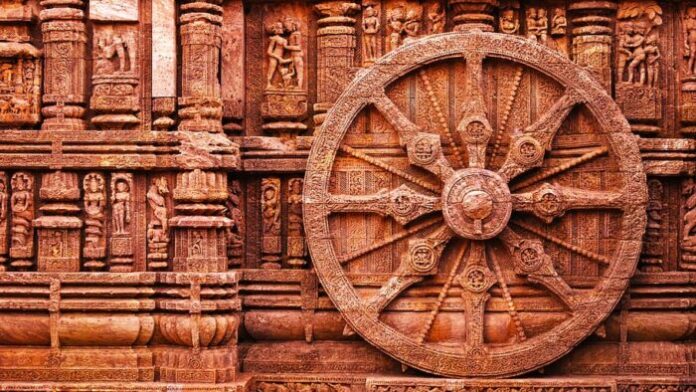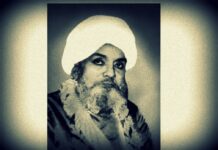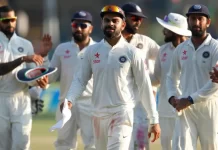The role of women during the Vedic and post-Vedic periods
The Vedas are the foundational texts of Indian culture. The Vedic period is widely accepted to have lasted from 300 BC to 600 BC. Only broad generalizations and general observations may be made about the situation of women during this lengthy time.
(i) Women’s Access to Freedom:
The level of participation freedom granted to women in public affairs reveals the nature of the status enjoyed by women during the Vedic era. “Purdah” was never observed by women. They were liberated. They had complete discretion when choosing a male mate. They may learn on their own. Remarrying was permitted for widows. However, they did not approve of divorce. Even men were prohibited from divorcing their spouses. Women were treated as “Ardhanginis” and granted total autonomy in domestic matters.
(ii) Women have equal access to educational opportunities:
Although male children were preferred to female children, daughters were never mistreated. They went through the “Brahmaachary” discipline, including the “Upanayana” ceremony, and received the same education as boys. Women studied Vedic literature alongside men, and some of them, including Lopamudra, Ghosa, and Sikata-Nivavari, are credited with writing some of the hymns of the Vedas. Up to around B.C. 300, many girls from prosperous families received a decent education.
(iii) The Role of Women in Marital and Family-Related Issues:
Marriage was seen as a social and religious obligation throughout the Vedic era, uniting the couple on an equal footing. Women have the liberty to live their entire lives as spinsters. They weren’t forced into marriage. Child marriage was unheard of. Only after reaching puberty and after completing their education did women have the right to choose their life companions.
Additionally, “Gandharva vivaha” or love weddings occurred frequently. In the Vedic era, marriage took the form of monogamy. It was acceptable for widows to remarry. These are several allusions to the “Niyoga” custom, according to which a brother or other close relative of a late spouse could wed the widow with the elders’ blessing.
The main goal of niyoga was to have a child in order to carry on the family tradition. Rig-Veda acknowledged a spinster’s entitlement to her father’s estate. The Rig-Veda makes no mention of the “Sati” ritual. The custom of receiving dowry still existed, although it was purely symbolic. It had not yet become a social problem.
In terms of family concerns, even if custom and tradition gave the husband greater control over running the home, they were nevertheless seen as equal to their husbands in many ways. The joint heads of the household were considered as the husband and wife. However, the wife was required to support her husband in the discharge of his obligations, particularly his religious obligations.
(iv) Economic Production and Professional Freedom
Vedic women had financial independence. There were some women working as teachers. The place of production was the home. Clothes were made by spinning and weaving at home. Women supported their husbands’ farming practices in addition to males.
(v) Inheritance and Property Rights:
Women’s rights to inherit property were severely constrained. A married daughter was not entitled to any inheritance from her father, but each spinster was given a right to a quarter of the wealth received by her brothers. Gifts and other items given to a woman at the time of her marriage were under her jurisdiction, but the patriarch was in charge of the majority of the family’s assets.
A woman’s indirect part of her husband’s wealth as a wife was nonexistent. A deserted woman, however, was entitled to one-third of her husband’s riches. A widow was not entitled to any of her husband’s possessions and was expected to live an austere life. It is possible to conclude that, despite the fact that protection was provided to them as daughters and wives, the social climate did not support women owning property.
(vi) Position in the Religious Sector
In the religious sphere, the wife had full rights and frequently took part in rituals with her husband. The husband and wife would both participate in religious rituals and sacrifices. Even religious discussions saw active participation from women.
Women’s Place in Public Life
In public gatherings, female debaters could excel. They frequently held a prominent position in social events, but they were forbidden admission into “Sabhas” because these locations served additional objectives outside making political decisions, such as drinking, gambling, and other vices. However, in later Vedic time, women’s involvement in public meetings and discussions became less and less popular.
Thus, it may be inferred that women did not have a lower status in Vedic India; rather, they held an honorable position. They enjoyed extensive rights in the social and religious spheres but few in the political and economic ones. They were regarded equally with men rather than as inferiors or subordinates.
Women’s status throughout the Epic period:
In Epic India, women held a respectable place in the home. they were accorded a respectable role in the epics of the Ramayana and Mahabharata; in both, they were referred to as the source of Dharma, prosperity, and pleasure. Numerous examples of courageous, valiant women, such Kaikeye, Sita, Rukmani, Satyabhama, Sabitri, and Draupadi, may be found.
The Ramayana is a magnificent example of the Hindu ideal of femininity; it extols the virtue of “Pativratya” and idealizes womanhood as one of our culture’s most revered traditions. The Mahabharata also describes the responsibilities and conduct of the wife toward her husband.
Women in the Dharmashatra and Puran Period:
The status of women increasingly deteriorated and experienced a significant transformation during the Dharmashastra and purana periods. They were denied access to formal education. Daughters were thought of as inferior people. Women’s freedom was restricted. Sons were prioritized above daughters. It was forbidden for girls to study the Vedas and become Brahma charinis.
Manu, the creator of Indian law, declared that women should be under their husbands during their youth, their sons during their old age, and their fathers throughout their childhood. She will never be worthy of freedom. He countered this, though, by saying that a society in which the woman was not honored would be damned.
Women’s independence was subject to a number of restrictions, which led to some issues emerging. Pre-puberty marriage became common, widow remarriage was outlawed, husbands were given the status of God for women, education was completely denied to women, the “Sati” custom became more and more common, the purdah system gained popularity, and polygyny became accepted.
By arguing that a wife and a slave cannot hold property, a woman was completely denied access to her husband’s wealth in the economic sphere. She was barred from participating in religious activities such as sacrifices, prayers, penance, and pilgrimages.
Factors That Contributed to Women’s Degradation:
The renounced sociologist Prabhati Mukharjee has determined some causes for the poor status of women in the post-Vedic period. These include the imposition of stringent Brahmanical austerities on the entire society, the joint family and caste systems’ rigid constraints, the absence of educational opportunities for women, the admission of non-Aryan wives into Aryan households, and foreign invasions.
Women during the era of Buddhism:
Women’s standing did slightly improve throughout the Buddhist era, but not much. Some of the caste system’s rigidities and limitations were loosened. Buddha advocated for equality and worked to elevate women’s place in society, including in culture, education, and religion. Due to the generally tolerant Buddhist worldview, women were able to restore some of their lost independence and prestige under the compassionate rule of the legendary Buddhist emperors Chandragupta Maurya, Ashoka, Sri Harsha, and others.
Women were not just limited to domestic duties, but they also had the option, if they so chose, of pursuing a career in school. Women eventually ascended to a position of clear superiority in the religious world. The status of “Sanyasis” was open to women. In Buddhist monastic life, many women assumed leadership positions. Women had their own sangha, known as the Bhikshuni Sangha, which was governed by the same rules and regulations as those of the monks. The sangha provided them with several chances for public life as well as cultural and charitable endeavors. However, their political and economic situation did not change.
Women’s status in medieval India:
The medieval period (during the time between 500 and 1500 A.D.), which saw a further decline in Indian women’s standing, turned out to be a very unhappy time for them. The arrival of the Muslims in India altered the course of Indian history. The main causes of this degeneration were the flood of foreign invaders and the rigid Brahmanical regulations.
A woman’s independence was restricted, she was forbidden access to the scriptures and even the written word, and she was treated as if she were a man’s appendage. The entire social life was governed by caste restrictions, which forbade widow remarriage and levirate marriages. Property could not be inherited by women.
Additionally, during the medieval period, women were degraded to the status of slaves. The purdah system of child marriage, the Sati practice, and other issues plagued the women. Throughout the Middle Ages, women’s standing continued to deteriorate.
However, there had been some societal shift in the 14th and 15th centuries. During this time, Ramanujacharya organized the first Bhakti Movement, which brought about unprecedented developments in Indian women’s social and religious life. The great saints Chaitanya, Nanak, Kabir, and others struggled for women’s freedom to practice their religions. Actually, the Bhakti Movement allowed women to practice their religion freely. They were able to secure some social freedom as a result of this liberation.
Saints were not permitted to enter sanyas without their wives’ permission under the “Grihashram” system of the Bhakti Movement. This circumstance granted women some significant rights. Women were encouraged to read holy texts and educate themselves by the saints of the Bhakti Movement.
In this way, the Bhakti movement provided women a new lease on life, but it had little impact on how the economy was organized, and as a result, women’s place in society remained low. She was in a terrible position due to the resurgence of “Sati,” the ban on second marriages, the growth of “Purdah,” and the increased incidence of polygamy. As a result, there was a significant difference in the position of women during the early Vedic and medieval periods.




































